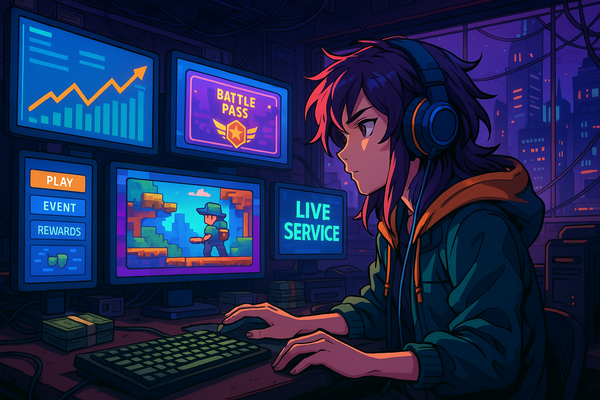Subscription-Based gaming: Is recurring revenue right for your indie game?
Subscription-Based Gaming: Is Recurring Revenue Right for Your Indie Game?
The subscription model is gaining popularity as a stable monetization strategy in the gaming world. For indie developers, adopting this model presents both opportunities and challenges. By offering players recurring access to exclusive content or features, developers can build a steady revenue stream while encouraging long-term engagement. In this article, we’ll explore the benefits, challenges, and best practices for implementing a subscription-based model in indie games.
1. What is a Subscription-Based model?
A subscription-based model involves players paying a recurring fee—usually monthly or annually—to access new content, features, or perks within a game. Unlike one-time purchases or microtransactions, the subscription model provides ongoing value, whether through regular content updates, VIP features, or access to exclusive areas. This strategy is commonly used in platforms like Xbox Game Pass and Apple Arcade, which give players access to a library of games for a flat fee
(Mistplay | Play and earn awesome rewards, Fungies.)
2. Advantages of Subscription-Based gaming
One of the main benefits of subscription-based gaming is revenue predictability. The recurring nature of subscriptions provides a stable cash flow, enabling indie developers to plan long-term projects and future content updates. This financial stability can also free developers from relying on volatile income sources, such as sporadic sales.
Another advantage is player retention. Subscribers are more likely to remain engaged with a game that offers continuous updates and features. With exclusive content locked behind a subscription, players feel incentivized to keep playing, ensuring they get the most value from their investment (Getgud.io).
3. Challenges for indie developers
Despite the advantages, the subscription model comes with significant challenges, especially for indie developers. First, subscriptions require continuous content creation to justify the recurring fees. Indie developers often operate with smaller teams and budgets, making it difficult to maintain the constant flow of content needed to retain subscribers.
Additionally, attracting players to subscribe can be tough. Many gamers are already paying for multiple subscriptions, such as Netflix or Xbox Game Pass, so the competition for player attention is fierce. Indie games must offer unique value—whether through regular updates, community engagement, or exclusive rewards—to stand out.
4. Types of subscription models
Indie developers can implement different types of subscription models depending on their game’s structure:
- Subscription-Only: Players can only access the game through a subscription. This is often paired with free trials to attract players.
- Optional subscription: Players can enjoy the base game for free, with a subscription offering additional features like in-game currency, cosmetics, or special events.
- Cross-Game Subscriptions: Players subscribe to access a catalog of games, commonly seen with services like Apple Arcade.
5. Is a subscription model right for your indie game?
To determine if a subscription-based model is suitable, indie developers need to evaluate their content delivery capacity. If your game offers a service that thrives on regular updates, such as multiplayer or evolving storylines, subscriptions can work well. For games with strong communities and regular events, a subscription model can create loyalty and engagement.
However, if your game lacks frequent updates or new content, it might be better suited to other monetization models like free-to-play with microtransactions.
The subscription-based model offers indie developers the opportunity to generate consistent revenue while fostering player loyalty. However, it requires a commitment to regular content updates and community engagement. By carefully evaluating your game’s structure and player base, you can decide whether a subscription model is the right fit for your indie title.



